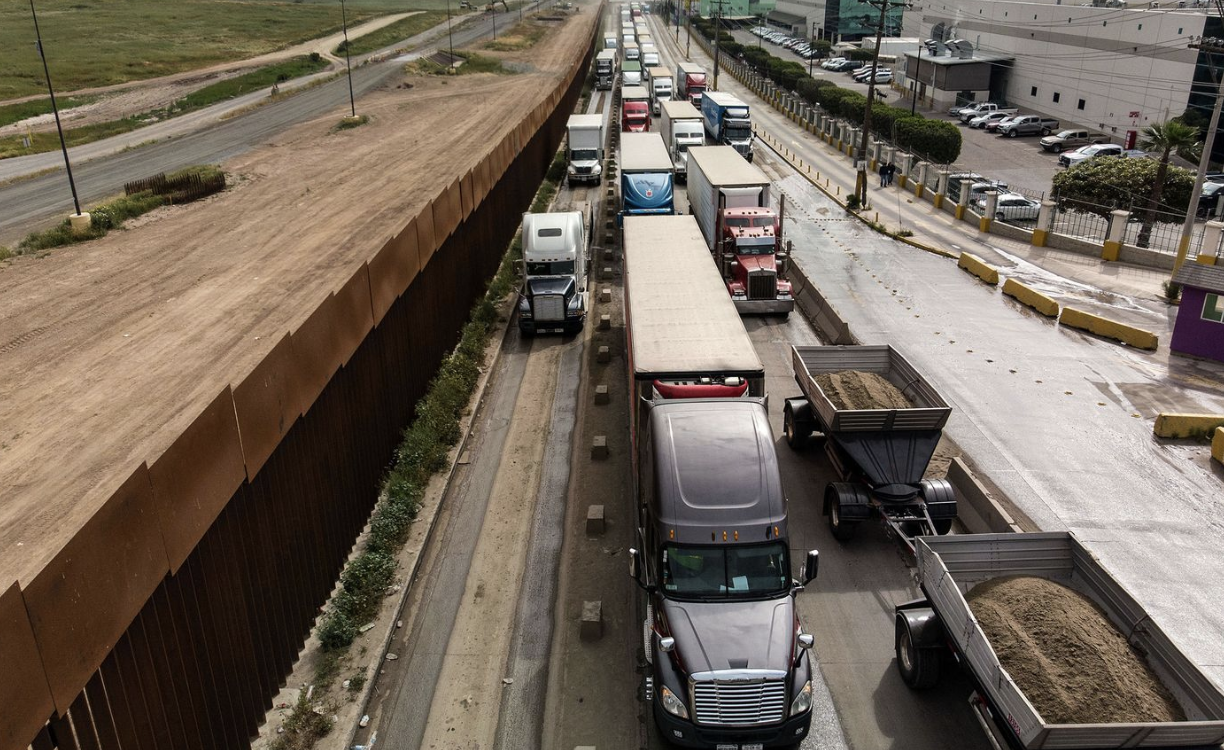Exporters got a small taste of what a border closure would feel like last week as companies scrambled to move as many goods as possible into the US to hedge against the possibility that Trump might follow through with his threat – creating massive lines and intense congestion at customs check points.
According to Bloomberg, the reassignment of 750 customs agents to assist the border patrol with the massive surge in migrants crossing the border left the checkpoints where legitimate goods flow into the US short-staffed. This, combined with the rush to move goods into the US created a ‘snarl of traffic’ that caused wait times for trucks delivering goods to surge to more than 10 hours from just 1 or 2 on a normal day.
Trump announced in a series of tweets sent Saturday night that the US would be shifting its focus to border security, potentially leaving some ports of entry short staffed.
We have redeployed 750 agents at the Southern Border’s specific Ports of Entry in order to help with the large scale surge of illegal migrants trying to make their way into the United States. This will cause traffic & commercial delays until such time as Mexico is able to use….
— Donald J. Trump (@realDonaldTrump) April 6, 2019
….it’s powerful common sense Immigration Laws to stop illegals from coming through Mexico into the U.S., and removing them back to their country of origin. Until Mexico cleans up this ridiculous & massive migration, we will be focusing on Border Security, not Ports of Entry….
— Donald J. Trump (@realDonaldTrump) April 6, 2019
….In the meantime, the Democrats in Congress must help the Republicans (we need their votes) to end the horrible, costly and foolish loopholes in our Immigration Laws. Once that happens, all will be smooth. We can NEVER allow Open Borders!
— Donald J. Trump (@realDonaldTrump) April 6, 2019
Wait times were particularly long in the most heavily trafficked crossings in El Paso, San Diego and Laredo.
“The delays have doubled, tripled, quadrupled – it’s not an exact science,” said Jaime Castaneda, vice president for trade policy at the U.S. Dairy Export Council. Lane closures and weekend shutdowns are adding to delays, he said.
The wait times are especially long in El Paso, Laredo and the San Diego area, said Ben Enriquez, senior vice president of Mexico for Transplace, a logistics service provider. In El Paso, it’s taking as long as 12 hours to cross into the U.S., up from about 1 to 2 hours on a normal day, he said. Usually when one port has congestion problems, trucks can be re-routed to other crossings, but now almost all entry points are confronting similar issues.
“The shippers try to push as much freight as possible and, at the same time, you have fewer officers” from U.S. Customs, Enriquez said. “So, it’s not a good combination.”
The delays are also raising costs for Mexican firms. Since trucks are spending more time caught up at the border, firms have been forced to shell out more money to bring in back ups to load with goods.
The delays are tying up trucks at the border that usually head back south with a load and then are ready to pick up freight again at factories in the interior of Mexico. That’s causing Mexican companies to pay extra to bring in empty trucks to load those goods, he said.
So far, the delays have been primarily for cargoes moving north and aren’t yet impacting southbound shipments of U.S. goods like meat and dairy. Mexico is the top buyer of American pork.
“Obviously, we want the ports of entry running smoothly,” said Joe Schuele, vice president of the U.S. Meat Export Federation.
Of course, most Americans wouldn’t pay any attention to these problems if they weren’t impacting the price of avocados, which have soared since Trump started with his border-closure threats. Fortunately, Trump has backed away from these threats – for now at least – thanks to the Mexican government’s efforts to try and slow the flow of immigrants. But the stakes for Mexican companies should those efforts lapse will remain extremely high.
via ZeroHedge News http://bit.ly/2uQk0Ll Tyler Durden
